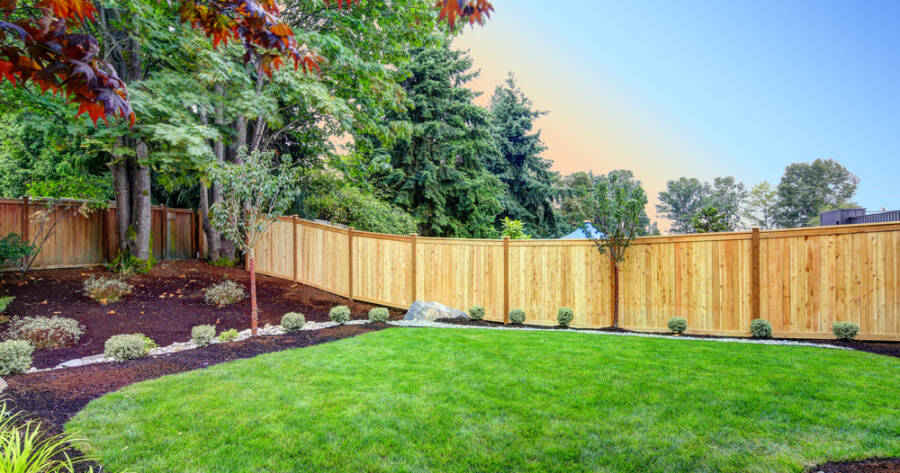Fencing installation in 2025 is an essential home improvement undertaking that enhances security and aesthetics while influencing property value. Various materials and labor costs create a wide range of total expenses. By considering influential cost factors, employing strategic planning, and assessing DIY versus professional installation options, homeowners can align their projects economically and aesthetically with their goals.
Understanding Fencing Installation Costs in 2025
Fencing installation is a pivotal aspect of home improvement projects, playing an essential role in enhancing security, privacy, and property aesthetics. The costs associated with installing a fence in 2025 vary considerably due to multiple dynamic factors such as materials, labor, and additional features. The average installation ranges from $23 to $40 per linear foot, positioning total project costs between $3,200 and $7,500 for a standard backyard fence. Budget-conscious homeowners must remain vigilant, as certain materials and designs elicit higher expenses.
Materials and Design Choices
In 2025, the choice of fencing material significantly affects installation costs. Common materials such as chain link, wood, vinyl, aluminum, and wrought iron present various price points and benefits. Chain link is typically the most cost-effective option, ranging from $8 to $40 per linear foot, whereas wrought iron marks the higher end of the spectrum, potentially reaching $90 per linear foot.
To balance initial costs with long-term value, homeowners often gravitate towards materials like vinyl for its minimal maintenance requirements despite higher initial outlay. Fencing enhances property value by up to 70% of the installation cost, especially well-designed privacy fences that complement a home’s aesthetic.
Influential Cost Factors
Labor is a constant within installation budgets, comprising about 50% of the total expenses. These costs vary based on regional labor rates and contractor expertise. In specific locales such as New England, prices may see an uptick due to the unique challenges presented by climate and seasonal constraints.
Additionally, specific yard conditions like steep grades, unfavorable soil, and underground utilities further influence the cost, potentially introducing unexpected challenges and expenses. Certain projects may also incur extra charges for permit acquisition, removal of existing structures, and land preparation.
Strategies for Cost-Effective Installation
Homeowners can mitigate fencing installation costs through strategic planning and decision-making. One effective strategy is purchasing materials in bulk and minimizing custom cuts by opting for standard heights and panel sizes.
Similarly, selecting cost-effective materials such as pressure-treated pine can drive down expenses without sacrificing quality. Furthermore, scheduling installations during off-peak seasons such as fall or winter can yield discounts ranging from 10-20%, addressing potential budget constraints.
DIY vs. Professional Installation
While tempting, DIY fencing projects introduce complexities that extend beyond cost savings. From navigating local regulations to renting specialized equipment, these challenges can quickly outweigh the perceived financial benefits.
Conversely, hiring professionals ensures compliance with local codes and brings the assurance of quality workmanship. Experienced contractors may offer warranties and transparent pricing plans, turning the fence into a long-term investment. Homeowners engage in informed decision-making when they thoroughly evaluate quotes from multiple contractors, thus securing competitive pricing.
Financing and Additional Considerations
In today’s economic landscape, varied financing options aid budgetary planning for fence installation. From contractor-led plans to home equity loans, these financing routes offer tailored solutions depending on project scope and individual financial circumstances. It’s prudent to compare associated interest rates, terms, and fees to ensure favorable agreements.
While budgeting, recognize that ongoing maintenance needs can vary according to material choices, impacting long-term financial outlays. For instance, wood fences typically require periodic staining, while materials like aluminum and vinyl demand minimal upkeep.
Why You Should Know More About Fencing Installation Costs
Fencing installation is a critical undertaking that profoundly affects a property’s security, beauty, and value. As the landscape of materials and labor dynamics evolves, understanding the 2025 cost framework is essential for effective planning. Homeowners must anticipate expenses shaped by materials, customization, and unforeseen challenges.
By leveraging practical strategies for savings and being open to professional expertise, individuals can ensure their fencing projects align both economically and aesthetically with their goals. Keeping abreast of financing options and scheduling advantages fortifies budgeting temples, enabling homeowners to tackle projects with confidence and foresight.
Sources
Average cost overview for 2025
Material cost comparison and saving strategies
Influential factors on pricing

